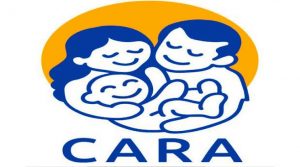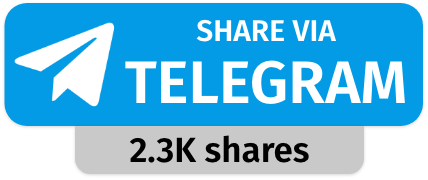Today’s Current Affairs: 2nd July 2025 for UPSC IAS exams, State PSC exams, SSC CGL, State SSC, RRB, Railways, Banking Exam & IBPS, etc
Table of Contents
Bond Yield:

Yield on India’s benchmark 10-year bonds will stay soft in July, according to Bank of Baroda (BoB) Research.
- A bond is a loan made by an investor to a borrower for a set period of time in return for regular interest payments.
- The time from when the bond is issued to when the borrower has agreed to pay the loan back is called its ‘term to maturity’.
- The bond issuer uses the money raised from bonds to undertake various activities such as funding expansion projects, refinancing existing debt, undertaking welfare activities, etc.
- Bond Yield is the return an investor expects to receive each year over its term to maturity.
- It partially depends on coupon payments, which refer to the periodic interest income obtained as a reward for holding bonds.
- The bondholders receive the bond’s face value at the end of the bond’s life. However, one may buy bonds at par value, discount (at a price lower than par value), or premium (at a price higher than par value) as they trade in the secondary market.
- Therefore, the prevailing market price of bonds also affects the bond yield.
- It is calculated by using the following formula Bond Yield = Coupon Amount/Price
- The prices at which investors buy and sell bonds in the secondary market move in the opposite direction to the yields they expect to receive .
- Once a bond is issued, it offers fixed interest payments to its owner over its term to maturity, which does not change.
- However, interest rates in financial markets change all the time, and, as a result, new bonds that are issued will offer different interest payments to investors than existing bonds.
- For example, suppose interest rates fall. New bonds that are issued will now offer lower interest payments.
- This makes existing bonds that were issued before the fall in interest rates more valuable to investors, because they offer higher interest payments compared to new bonds.
- As a result, the price of existing bonds will increase.
- Bond yield is the earning of an investor from a bond over a specific tenure, expressed in a percentage. It is dependent on the interest rate and bond price.
- As a result, when the interest rate falls, and the bond price is higher than the face value of the bond, your bond yield will be lower than the coupon rate.
- Similarly, when interest rates rise and bond prices are lower than the face value, your bond yield will be higher than the coupon rate.
Central Adoption Resource Authority: New Study

The Central Adoption Resource Authority (CARA) recently clarified that adoptive parents do not need hard copies of adoption orders, as digitally certified versions sent via e-mail are legally valid and sufficient under the current rules.
- Central Adoption Resource Authority (CARA) is a statutory body of the Ministry of Women & Child Development, Government of India.
- It was established in 1990 as an autonomous body.
- Through Section 68 of the Juvenile Justice (Care and Protection of Children) Act, 2015 (JJ Act 2015), CARA attained the status of a statutory body.
- It functions as the nodal body for adoption of Indian children and is mandated to monitor and regulate in-country and inter-country adoptions.
- CARA is designated as the Central Authority to deal with intercountry adoptions in accordance with the provisions of the Hague Convention on Intercountry Adoption, 1993, ratified by the Government of India in 2003.
- CARA primarily deals with the adoption of orphan, abandoned, and surrendered children through its associated/recognised adoption agencies.
- In India, a child can be placed with a family under the Hindu Adoption and Maintenance Act 1956, Guardians and Wards Act, 1890 and Juvenile Justice Act, 2000.
- The mandatory registration of Child Care Institutions (CCIs) and linking to CARA has been provided in the JJ Act 2015.
- Functions of CARA:
- Monitor and regulate the procedure for in-country adoption;
- Receive applications of an Non-Resident Indian (NRI) or Overseas Citizen of India (OCI) or a foreigner living abroad through authorised adoption agency or Central Authority or the Government department or the Indian diplomatic mission concerned and process the same;
- Receive and process applications received from a foreigner or an OCI residing in India for one year or more, and who is interested in adopting a child from India;
- Issue No Objection Certificate in all cases of intercountry adoptions;
- Issue Conformity Certificate in the inter-country adoption cases under Article 23 of the Hague Adoption Convention in respect of intercountry adoption;
- Intimate the immigration authorities of India and the receiving country of the child about the inter-country adoption cases;
- Provide support and guidance to State Adoption Resource Agencies, District Child Protection Units, Specialised Adoption Agencies, and other stakeholders of adoption in related matters, through trainings, workshops, exposure visits, consultations, conferences, seminars, and other capacity-building programmes;
Darknet:

The Narcotics Control Bureau (NCB) recently said its Kochi zonal unit busted “India’s most prolific darknet drug syndicate” operating under the name “Ketamelon”.
- Darknet refers to a segment of the internet that is accessible only through advanced protocols designed to provide user anonymity and security.
- Unlike the surface web, which can be easily accessed using standard search engines and web browsers, darknet content is not indexed and requires specialized tools, such as privacy-focused browsers like Tor, to access.
- Tor (The Onion Router) is free and open-source software for enabling anonymous communication.
- Tor utilizes a method known as onion routing, which anonymizes users by routing their connections through multiple volunteer-operated servers, making it difficult to trace their actual IP
- The concept of the darknet is closely related to the dark web, but the terms are not entirely interchangeable.
- The dark web is the content found on darknet networks.
- “Darknet” and “dark web” are also often incorrectly used interchangeably with “deep web.”
- The deep web encompasses everything not indexed by conventional search engines but may still be accessed through regular web browsers if the URL is known.
- The darknet represents a deeper layer of the web, hosting content that is intentionally hidden and only reachable by a select group of users.
- Darknet also includes friend-to-friend (F2F) networks that allow secure, private communications among known individuals.
- While darknet technologies can provide a means for users to bypass censorship and maintain privacy in their online activities, they are also associated with illegal activities such as the trade of illicit goods and services.
RailOne App:

The Union Railway Minister recently launched a new app, RailOne, in New Delhi.
- RailOne App is a new super app designed to serve as a one-stop platform for all railway-related queries and passenger needs.
- The app has been conceived by the Railways’ Public Sector Undertaking (PSU), the Centre for Railway Information Systems (CRIS).
- RailOne is designed to bring every railway service—ticket booking, real-time tracking, food ordering, PNR status, refunds, porter booking, and last-mile taxi—into one seamless, user-friendly platform.
- It eliminates the need for multiple apps by integrating functionalities from IRCTC Rail Connect, UTSonMobile, Rail Madad, NTES, and Food on Track.
- Reserved tickets will continue to be offered on IRCTC. The RailOne app has also been authorised by IRCTC, just like many other commercial apps who have partnered with IRCTC.
- Key features of RailOne:
- Easily plan journeys and book tickets using the “Plan My Journey” tool with support for multiple classes and quotas.
- Check your entire booking history—both reserved and unreserved—with filtering options for duration and type.
- Get real-time updates on train status, platform numbers, and expected delays.
- View your coach location on the platform to ease boarding.
- Order meals from partner vendors directly from your seat.
- Lodge complaints or share feedback directly with Indian Railways and track resolution status.
- Initiate and track refunds for canceled or missed trains through a simplified interface.
- Use the app in multiple Indian languages for easier access across regions.
- Users can log in using their IRCTC or UTS credentials without remembering multiple passwords.
- Pay securely using Indian Railways’ own digital wallet with biometric or mPIN authentication.
Microcrystalline Cellulose:

The pharma unit of Sigachi Industries in Hyderabad, which makes microcrystalline cellulose (MCC), was the scene of a lethal accident recently, with the toll rising to 36.
- Microcrystalline Cellulose (MCC) is a free-flowing powdery substance extracted as a pulp from fibrous plant material called refined wood pulp.
- It is a purified, partially depolymerized cellulose having the formula (C6H10O5)n.
- Chemically, it is an inert substance, is not degraded during digestion, and has no appreciable absorption.
- As a natural, fiber-rich component, it’s nontoxic and chewable.
- Wood is the most common source of pharmaceutical MCC, in which cellulose chains are closely packed in layered form and are held together by a cross-linking polymer and strong hydrogen bonds.
- Its crystalline structure is due to its microfibres having a high degree of three-dimensional internal bonding.
- During compression, MCC plastically deforms, and therefore, interparticle bonding increases. The plasticity of the MCC is the main reason for its exceptional binding property.
- It is used as a texturizer, extender, emulsifier, and binder in the pharmaceutical industry and as a bulking agent in food production.
- Its vital use is in the making of vitamin supplements and tablets.
- MCC can add weight to a drug and facilitate the active ingredients to function effectively while making the drug conform to weight specifications.
Research Development and Innovation (RDI) Scheme:

The Union Cabinet, chaired by Prime Minister of India has approved the Research Development and Innovation (RDI) Scheme with a corpus of Rs. One lakh Crore.
- It aims to provide long-term financing or refinancing with long tenors at low or nil interest rates to spur private sector investment in RDI.
- The scheme has been designed to overcome the constraints and challenges in funding of the private sector.
- It seeks to provide growth & risk capital to sunrise and strategic sectors to facilitate innovation, promote adoption of technology and enhance competitiveness.
- Key objectives of the Scheme:
- Encourage the private sector to scale up research, development, and innovation (RDI) in sunrise domains and in other sectors relevant for economic security, strategic purpose, and self-reliance;
- Finance transformative projects at higher levels of Technology Readiness Levels (TRL)
- Support acquisition of technologies which are critical or of high strategic importance;
- The Governing Board of Anusandhan National Research Foundation (ANRF), chaired by the Prime Minister, will provide overarching strategic direction to the RDI Scheme.
- The Executive Council (EC) of ANRF will approve the Scheme’s guidelines, and recommend 2nd level fund managers and scope and type of projects in sunrise sectors.
- An Empowered Group of Secretaries (EGoS) led by the Cabinet Secretary, will be responsible for approving scheme changes, sectors and types of projects as well as second-level fund managers besides reviewing the performance of the Scheme.
- The Department of Science and Technology (DST) will serve as the nodal department for implementation of the RDI
- The RDI Scheme will have a two-tiered funding mechanism.
- At the first level, there will be a Special Purpose Fund (SPF) established within the ANRF, which will act as the custodian of funds.
- From the SPF funds shall be allocated to a variety of 2nd level fund managers. This will be mainly in the form of long-term concessional loans.
- The funding to R&D projects by the 2nd level fund managers would normally be in the form of long-term loan at low or nil interest rates.
- Financing in the form of equity may also be done, especially in case of startups. Contribution to Deep-Tech Fund of Funds (FoF) or any other FoF meant for RDI may also be considered.
Employment Linked Incentive (ELI) Scheme:

The Union Cabinet chaired by the Prime Minister of India has approved the Employment Linked Incentive (ELI) Scheme.
- Employment Linked Incentive (ELI) Scheme will support employment generation, enhance employability and social security across all sectors, with special focus on the manufacturing sector.
- The ELI Scheme was announced in the Union Budget 2024-25 as part of PM’s package of five schemes to facilitate employment, skilling and other opportunities for 4.1 Crore youth with a total budget outlay of Rs 2 Lakh Crore.
- It aims to incentivize the creation of more than 3.5 Crore jobs in the country, over a period of 2 years. Out of these, 1.92 Crore beneficiaries will be first timers, entering the workforce.
- Under the Scheme, while the first-time employees will get one month’s wage (up to Rs 15,000/-), the employers will be given incentives for a period of up to two years for generating additional employment, with extended benefits for another two years for the manufacturing sector.
- The benefits of the Scheme would be applicable to jobs created between 01st August 2025 and 31st July, 2027.
- The Scheme consists of two parts with Par A focused on first timers and Part B focused on employers:
GOSAT-GW Satellite:

Japan launched the GOSAT-GW Satellite from the Tanegashima Space Centre.
- The Global Observing SATellite for Greenhouse gases and Water cycle (GOSAT-GW) is a Japanese Earth observation satellite .
- It was launched by the Japanese Aerospace Exploration Agency (JAXA).
- It is carrying two instruments onboard: the Total Anthropogenic and Natural emissions mapping SpectrOmeter-3 (TANSO-3), and the Advanced Microwave Scanning Radiometer 3 (AMSR3).
- It was launched by using an H-2A
- Objectives
- Monitoring atmospheric global-mean concentrations of greenhouse gasses (GHGs),
- Verifying national anthropogenic GHG emissions inventories,
- Detecting GHG emissions from large sources, such as megacities and power plants.
- The satellite will be in a sun-synchronous orbit at an altitude of 666 km with a repeat cycle of three days.
The Prime Minister of India will undertake a significant multi-nation tour from July 2 to July 9, visiting Ghana:
The Prime Minister of India will undertake a significant multi-nation tour from July 2 to July 9, visiting Ghana, Trinidad & Tobago, Argentina, Brazil, and Namibia to strengthen India’s bilateral ties and global partnerships.It is located in West Africa and is sandwiched between Cote d’Ivoire (Ivory Coast) and Togo.The country shares its borders with three countries: Côte d’Ivoire to the west, Burkina Faso to the north, and Togo to the east. It is situated on the Gulf of Guinea and the Atlantic Ocean in the subregion of West Africa. In Ghana Kwahu Plateau and Gambaga Scarp form major uplands and escarpments. Lake Volta which is created by the Akosombo Dam and considered as one of the largest artificial lakes globally. The drainage system is dominated by the Volta River basin, which includes Lake Volta and the Black Volta, White Volta, and Oti rivers. Economy: Gold, cocoa and more recently oil form the cornerstone of Ghana’s economy and have helped fuel an economic boom. Capital: Accra.
INS Udaygiri:
Yard 12652 (Udaygiri) being built at Mazagon Dock Shipbuilders Limited (MDSL), was delivered to the Indian Navy.INS Udaygiri is the second among the seven Project 17A (P-17A) frigates under construction at Mazagon Dock Shipbuilders Limited (MDSL) in Mumbai and Garden Reach Shipbuilders and Engineers in Kolkata.The Project is a follow-on of the Shivalik class (Project 17) frigates active in service.It is a modern Avatar of its predecessor, erstwhile INS Udaygiri which was a Steam Ship, decommissioned on 24 August 2007 after rendering 31 years of glorious service to the nation.These multi-mission frigates are capable of operating in a ‘Blue Water’ environment dealing with both conventional and non-conventional threats in the area of India’s Maritime Interests.
Refugee, Deportation and Related Issues in India:
India has intensified its action against illegal migrants, particularly along the eastern border, through measures such as deportation and pushbacks, in the wake of recent national security concerns and political developments in Bangladesh.However, increasing cases of wrongful expulsions, including of Indian citizens, have raised serious concerns regarding citizenship verification, due process, and constitutional safeguards.Deportation is the formal, legal process of removing a foreign national from Indian territory who is staying illegally or without valid documents. Procedure: Detection → Detention → Legal proceedings → Identity verification → Repatriation via diplomatic channels. Governed by laws like the Foreigners Act, 1946, and the Immigration and Foreigners Act, 2025.Involves Ministry of Home Affairs (MHA), Foreigners Regional Registration Office (FRRO), and concerned embassy. Involves judicial oversight, compliance with Article 21 (Right to Life) and international norms.Pushback refers to the informal or extra-legal practice of forcibly returning suspected foreigners, especially near international borders, without due legal procedure.Conducted by: Primarily Border Security Force (BSF), often at the point of interception.Legal Status: Not codified in Indian law, lacks judicial oversight or nationality verification.
India’s Refugee Policy:
India is not a signatory to the 1951 UN Refugee Convention or its 1967 Protocol and has no dedicated domestic refugee law. India has refrained from signing the Convention due to its narrow and Eurocentric definition of refugees, which excludes economic migrants and does not align with South Asian realities.Additionally, India is concerned that binding obligations may compromise its sovereignty, impact domestic security, and limit its ability to follow an ad hoc, humanitarian approach to refugee protection.Refugees from countries like Myanmar, Afghanistan, and Sri Lanka are governed under the Foreigners Act, 1946, without specific legal protections.States cannot grant refugee status, reinforcing India’s centralised, ad hoc approach, offering humanitarian assistance without legal recognition or rights.
Earth’s Oldest-Known Rocks:
A volcanic rock belt in Quebec’s (Canada) Nuvvuagittuq Greenstone Belt, dated to be 4.16 billion years old, has been identified as the oldest-known rock on Earth, originating from the Hadean eon (4.5–4.03 billion years ago), when Earth itself was formed about 4.6 billion years ago.The rocks are metamorphosed volcanic basalt, formed when magma solidified underground, and provide clues about Earth’s early crust, primordial oceans, and the environment where life may have begun. Two radioactive dating methods (samarium-neodymium decay) confirmed the age, making them the oldest-known intact rocks. Zircon crystals from Australia (4.4 billion years old) remain the oldest mineral fragments, but the Quebec rocks are the oldest intact geological formations. The Hadean eon (4.5–4.03 billion years ago) was previously thought to be a molten hellscape (extremely harsh, hostile, or dangerous to life), but evidence suggests a cooling crust, shallow oceans, and an early atmosphere.
Teak Leaves for Laser Protection:
Indian scientists have discovered that teak leaf extract could be harnessed as a natural, eco-friendly optical limiter to protect eyes and sensitive sensors from high-intensity laser radiation. Teak leaves contain anthocyanins, natural pigments with nonlinear optical (NLO) properties, making them suitable for optical power-limiting applications such as laser safety goggles, optical shields, and laser-resistant coatings.
Teak (Tectona grandis) is a moist deciduous tree known as the “King of Timbers” for its durability, strength, and resistance to pests, water, and decay, making it ideal for shipbuilding, premium furniture, flooring, exterior construction, carving, turnings, and musical instruments. India holds 35% of the world’s planted teak forests, while Asia accounts for 95% of global teak resources. It is native to South and Southeast Asia, including India, Myanmar, Thailand, Laos, and Indonesia. In India, it grows in Madhya Pradesh, Maharashtra, Karnataka, Kerala, Tamil Nadu, Assam, and the Northeast, thriving in well-drained soils and full sunlight.Teak is a large deciduous tree with a straight cylindrical trunk (1–1.5 m diameter), oblong dark green leaves in opposite pairs, and small, fragrant white/cream flowers in clusters.
Electronic Private Automatic Branch Exchange:
In fast-paced corporate environment, efficient and integrated communication is essential for productivity, and Electronic Private Automatic Branch Exchange (EPABX) systems serve as a critical infrastructure enabling seamless internal and external connectivity in offices.EPABX is a telephone switching system used in businesses to manage both internal and external communication, allowing multiple office telephones to connect through a shared external trunk line without requiring individual lines for each user. The core of EPABX is its switching mechanism, which directs calls accurately across internal and external lines.
10 Years of The Digital India Initiative:
India celebrated 10 years of the Digital India initiative on July 1. Prime Minister Narendra Modi highlighted its transformation from a governance scheme into a people-driven movement.Digital India launched: 1st July 2015 by the Prime Minister of India. Ministry of Electronics and Information Technology (MeitY).Vision: To transform India into a digitally empowered society and knowledge economy. Objective: Deliver digital infrastructure as a utility to every citizen, ensure governance & services on demand, and digitally empower citizens.
One Big Beautiful Bill:
The US Senate narrowly advanced President Trump’s “One Big Beautiful Bill”, a sweeping tax and spending package estimated to add $3.3 trillion to federal debt.
One Big Beautiful Bill:
It is a 940-page legislative packagecombining tax reforms, spending cuts, and policy changes, including:
Tax Cuts – Extends Trump’s 2017 tax cuts for the wealthy, eliminates taxes on tips/overtime pay, and raises SALT deduction limits.
Spending Cuts – Slashes Medicaid and SNAP (food aid) while increasing defence spending ($158B) and border security ($170B).
Debt Ceiling Hike – Proposes raising the limit by $5 trillion to prevent a US default.
Solar Energy Corporation of India (SECI):
The Solar Energy Corporation of India (SECI) has successfully executed over 60 GW of Power Sale Agreements (PSAs) for solar, wind, and hybrid energy projects.SECI is a Central Public Sector Undertaking (CPSU) under the Ministry of New and Renewable Energy (MNRE). It serves as a nodal agency for implementing India’s renewable energy initiatives.Established: 2011, to implement the National Solar Mission (NSM).
Aim: SECI was initially focused only on solar energy, SECI’s scope has expanded to cover the entire renewable energy spectrum, and it will soon be renamed Renewable Energy Corporation of India (RECI).
Backdoor Layoffs:
Google has initiated a Voluntary Exit Programme (VEP) and new hybrid work mandates, sparking debate over ‘backdoor layoffs’ amid ongoing workforce restructuring across global tech giants.Backdoor layoffs are indirect methods used by companies to reduce workforce without formal termination notices, often avoiding regulatory scrutiny and public backlash.Employees are offered severance pay to resign voluntarily. This helps companies reduce headcount without official layoffs. E.g. Google’s VEP for Core Systems and Marketing teams.Forcing remote workers to shift to hybrid schedules may lead to resignations, effectively reducing staff without declaring layoffs.




